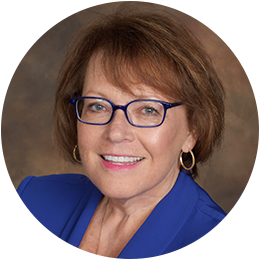
VerityStream concluded a 10-part webinar series on Privileging on August 24, 2021. We covered a lot of topics including initiating privileging projects, how to help assure that projects for standardizing privileging projects are successful and other topics such as age-specific privileging, telehealth privileging, privileging for Ambulatory Surgery Centers, etc. Our last webinar of the series was on Privileging Advanced Practice Providers. I’d like to thank all of you who have attended – and hope that you have benefited from the sessions that you’ve been able to attend (and remember that recordings are available to those who registered but were unable to attend).
As we have gone through the series, I’ve really thought a lot about how privileging has changed over the years. Since I’ve been involved in privileging for 35+ years, I have personally experienced (endured might be a more appropriate word!) the amazing changes that have occurred.

We have gone from privileges (on paper) that were huge laundry lists in procedurally based specialties (most of the time with only the procedures defined – not any cognitive privileges) or unclearly described categories in the more cognitive specialties.
Here is a sample of how a vaguely-defined category approach to privileges in Internal Medicine was typically defined in the 1980’s:
Category 1:
Privileges for the treatment of uncomplicated illnesses, injuries, or conditions that have lower risk for the patient and represent no apparent serious threat to life.
Category 2:
Privileges for the treatment of major illnesses, injuries, or conditions that post no significant risk to life and require skills usually acquired upon completion of residency training sufficient to qualify the applicant for board certification.
Category 3:
Privileges for the treatment of severe, life-threatening, or potentially life-threatening illnesses, injuries, or conditions usually requiring skills acquired upon completion of fellowship training sufficient to qualify the applicant for subspecialty board certification.
As you can read for yourself, the above category approach doesn’t define the privileges in the way that we require today – of exactly what privileges a provider can – or cannot – perform.
The industry moved towards new approaches to delineating privileges – “bundling” preceded the development of core privileges. And – early core privileges were significantly different than what we see commonly used today. I wish I had kept examples of early core privileges. I just got out one of my old laptops to see if I could find any samples and could not. But suffice it to say that I distinctly remember seeing core privileges in orthopedics that included two sentences to describe the entire specialty. And – the brevity of this type of early core privileges was the reason why CMS (Center for Medicare and Medicaid Services) published, in November, 2004, instructions to surveyors about privileges in general and how they should survey – and the instructions included a section about core privileges. If you are interested in reviewing what CMS had to say, here is the link. These requirements are still in effect. Basically, CMS said that organizations that use a core privileges approach must specifically define what privileges are included in a core and that it cannot be assumed that a provider can (or should) be granted everything within a core. That meant that organizations had to come up with a way to allow providers to deselect privileges within the core. There is a lot more. This 11/2004 document had a major impact on the privileging process and it led to the Joint Commission publishing a FAQ on Core Privileges which can be found today on the Joint Commission website.
Today, facilitation and management of an organization’s privileging process is becoming a specialty area within medical staff services. Many organizations – particularly larger organizations and health systems – seek qualified individuals to administrate the clinical privileging program – and these individuals can be hard to recruit, because there aren’t a lot of MSP’s (Medical Services Professionals) that have advanced knowledge of privileging.
Privileging has certainly evolved from the time that I was first introduced to it (and I probably made every mistake that I now caution you not to make). We used to care about just getting a provider to complete a privilege list with some level of accuracy and then storing the privilege delineation in a paper file. We have moved to a much more critical process that includes developing and deploying criteria for performance of specific privileges (education/training, outcomes, clinical activity, etc.). Application of the criteria will soon be facilitated by the use of software that will identify when a provider requests privileges that he/she doesn’t meet the criteria to request (and believe me, I never envisioned this 35 years ago!). Privileging is now already supported by companion reports that identify a provider’s clinical activity within an organization/health system – thus identifying low volume providers, providers who meet clinical activity requirements (or don’t) and providers that may have exercised privileges which they were not granted. There is much more to come. The reason that this logic is being built into software is because of the importance of privileging in today’s healthcare organizations. Privileging is truly a patient safety measure – we all know it and we need all the tools possible to assist us and our physician leaders with this important activity.
Today is a great time to be involved in privileging. I hope that you and your organization will benefit from the privileging tools that are now available – and I also hope that some of you will seek to become the privileging experts that our healthcare organizations badly need.
